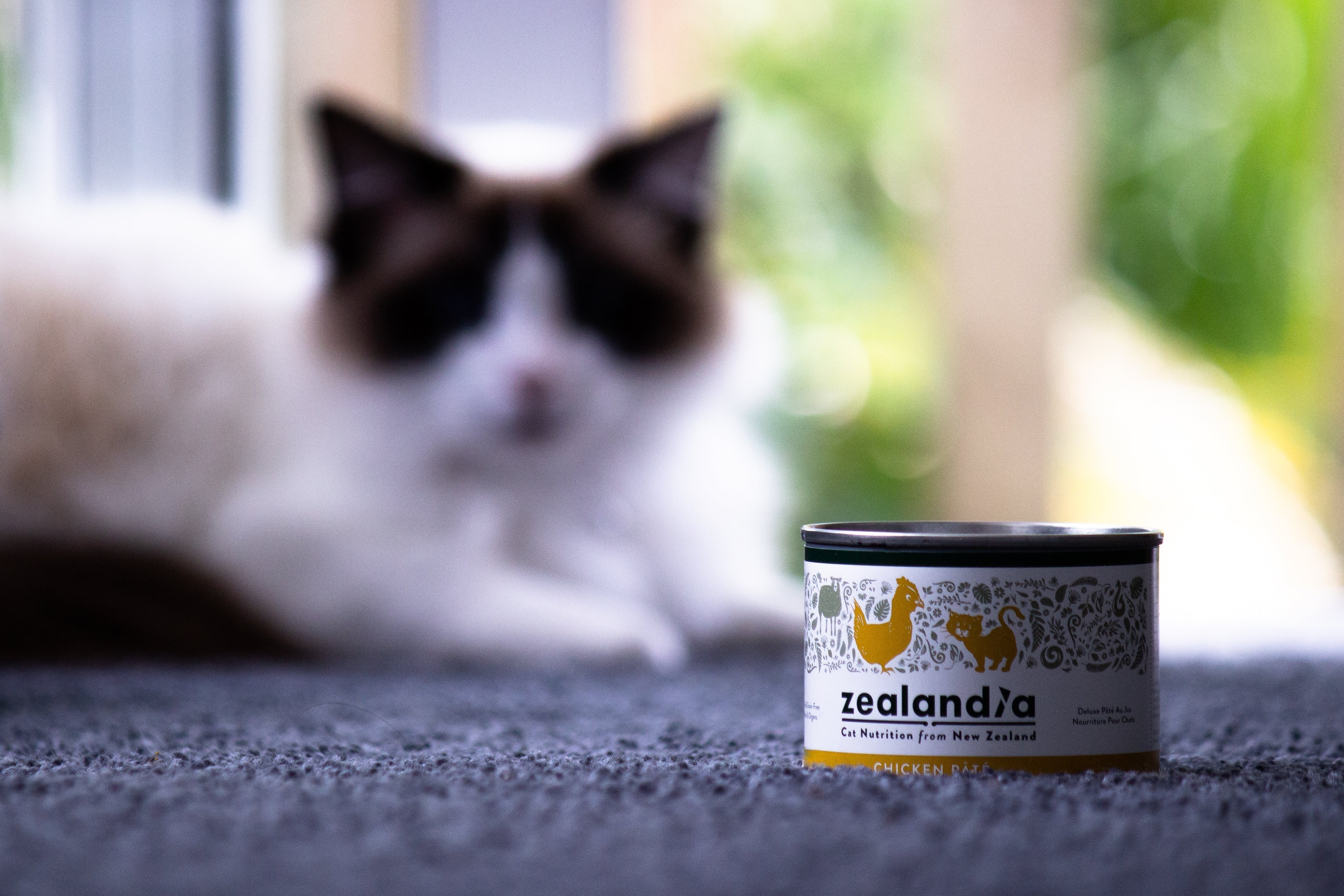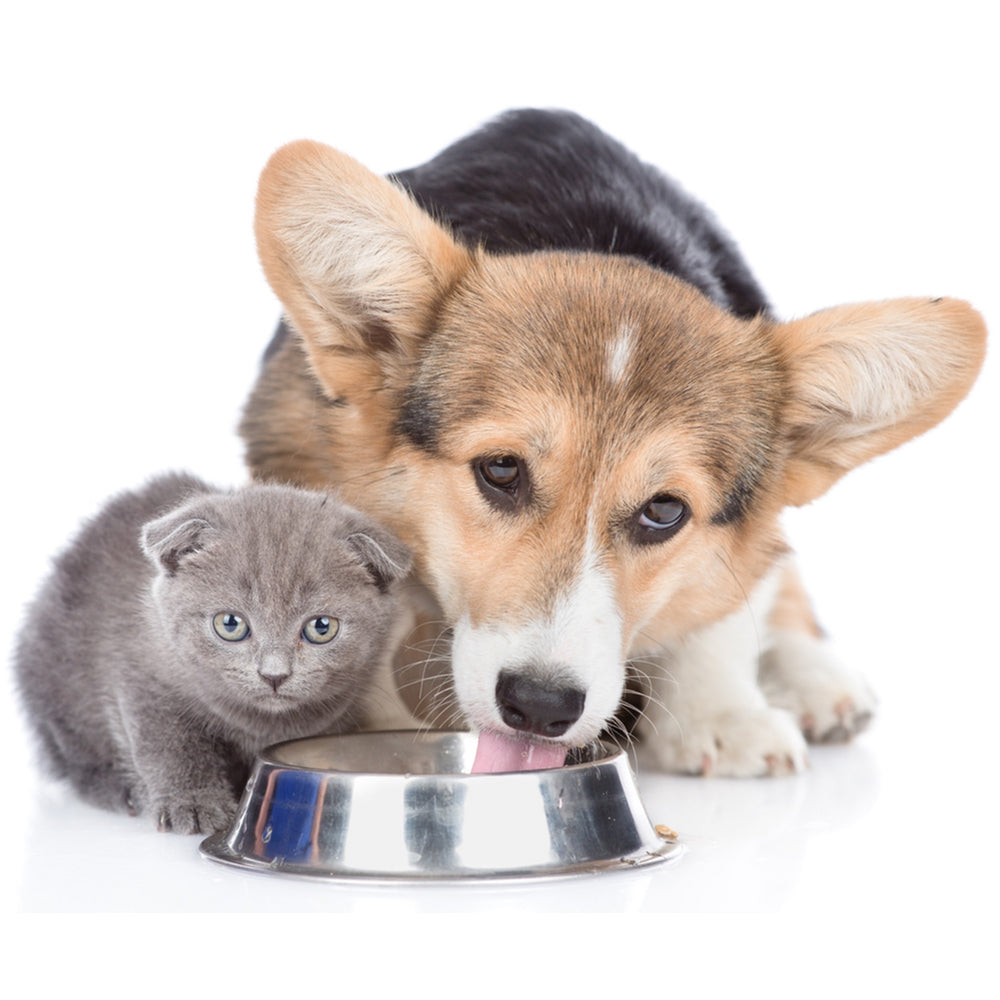What other animals can also eat canned cat & dog food?

Written by Dr Sarah-Jane Molier BVM&S MRCVS BSc (United Kingdom)
You may be keen to support your local wildlife and are wondering what food you can leave out. Or perhaps you are considering feeding some tinned cat or dog food to a different pet. Either way, let’s explore what other animals can also eat canned cat or dog food.
It’s important to note that each species of animal has slightly different natural diets and nutritional requirements. So before you consider feeding any animals, it’s important that you do your research first. Let’s look at some animals which can also eat canned cat and/or dog food.
Hedgehogs
Hedgehogs are insectivores. In the wild, they snuffle through the undergrowth looking for bugs such as earthworms, ground beetles, caterpillars, earwigs and millipedes.
Since this is their natural diet, encouraging insects to live in your garden will provide the most natural food source for any visiting hedgehogs. You can do this by building bug hotels (for example piles of logs) and planting native hedges, shrubs and flowers to attract a variety of insects.
During Autumn and the beginning of winter, hedgehogs need to gain enough weight so that they are ready for hibernation. During this time, you can supplement their natural diet, to help make sure they reach a healthy hibernation weight.
Hedgehogs need a diet containing more than 20% protein, and 5-15% fat, with adequate fibre. Since you are only supplementing their natural diet, they should be eating a nice variety of protein sources. You can offer any meaty dog or cat food to supplement their diet.
You should never leave milk out for hedgehogs since they are lactose intolerant, and this can cause diarrhoea. Instead, always make sure that they have fresh water available.
Bread isn’t suitable for hedgehogs, since it is mainly carbohydrate and is of little nutritional value to them.
Remember that hedgehogs are nocturnal, so it is sensible to put fresh food out at dusk. Be aware that leaving food down may attract all sorts of other, potentially unwanted, wildlife visitors! You can overcome this by creating a hedgehog feeding station, that other wild animals would find hard to access.
Birds
According to the Royal Society of Protection for Birds (RSPB), tinned meaty dog and cat food can provide a good substitute for earthworms. While it shouldn’t be offered year-round, it can be offered in small quantities during spells of warm, dry weather. During these spells, the ground is too dry and hard for the birds to access the worms.
Blackbirds especially enjoy wet dog food, and may even feed it to their chicks. Magpies, gulls and crows have also been known to take wet dog and cat food.
Other wildlife
A variety of other wildlife would feast on meaty wet cat or dog food, given the opportunity! This includes:
- Foxes: Foxes are omnivores and are well known for their scavenging techniques! During winter, foxes may find it harder to find food, which may lead them to seek food from humans.
- Raccoons: Racoons are also scavengers, who seek an easy life! They are well known for stealing food from humans.
- Skunks: Skunks usually eat insects, but will scavenge for other food sources in the winter when food is scarce.
- Possums: Possums are mainly herbivores. However, they will eat insects and bird eggs. They will also scavenge on pet food, given the opportunity!
Naturally, this list of wildlife depends on where you are in the world!
Ferrets
Ferrets are obligate carnivores, as are cats, meaning they have to eat a meat-based diet to survive. Ferrets require 32-38% protein and 15-20% fat. The best food for a pet ferret is a nutritionally balanced and complete ferret food. They can also eat cat food; ideally kitten food, which has a higher protein content. However, this should not be their permanent diet, since ferret food has been specifically designed with their nutritional needs in mind. Dog food is not suitable for ferrets, as the protein and fat contents are not high enough.
While you may feel great about feeding your visiting hedgehog, for example, it’s important to consider any other wildlife you may be attracting. Some may be unwanted! If you are considering feeding any wildlife, try to tailor a feeding station for the intended species. Consider using size of entry point, location and height to ensure your food is only accessible to the intended target. Of course, always make sure any homemade feeding stations are structurally and materially safe before using them. There are also some important hygiene guidelines to follow.
Tips for feeding wildlife
If you do choose to feed any visiting wildlife, it’s important to be aware of a few guidelines:
- Always make sure fresh water is available, in a dish that the intended wildlife can easily access. Don’t forget about shallow water stations for insects! Stones in a little water, or wet sand can work well.
- Don’t overfeed. This ensures the wildlife consumes a balanced diet, consisting of their natural food source too. Remember, your food should supplement their natural food source during times of need, not replace it.
- Always remove any uneaten food regularly, before it spoils. Wildlife can suffer from food poisoning from spoiled food too.
- Keep bowls or feeding stations clean, by washing them regularly with a mild, pet-safe washing-up liquid. Remember to rinse thoroughly. For your own hygiene and safety, it is advisable to wash wildlife dishes outside, and not in your kitchen.
- If you notice any poorly or injured wildlife, contact your local wildlife rescue or hospital for advice.
Dog and cat food is best suited to dogs and cats since each species has unique nutritional needs. It’s important to note that dog food should never be fed to cats. However, in some situations, wet dog and cat food can be used to supplement the diet of wild animals during months when natural food may be scarce, or hard to access.



